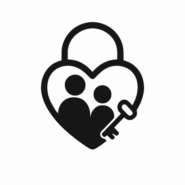Insight = clarity. Responsibility gives agency. Boundaries give safety. Story gives meaning. Integration makes it stick.
By now, Jordan and Alex had begun to see their relationship differently. They named their vulnerabilities from the past, set limits that made love safer, and started to re-author their story. For the first time since the betrayal, they felt a flicker of hope that things could change.
But then came the harder part: living it out.
Insight is only half the journey. You can have the deepest realizations or the most powerful conversations in a journal and still find yourself slipping back into old patterns the next morning. The real work is integration – taking what you’ve learned and weaving it into daily life.
Why Integration Matters
Think of it like learning a new language. At first, you can memorize vocabulary and repeat phrases, but until you actually practice speaking – awkward pauses, mistakes and all – it doesn’t stick. The same is true in healing. Growth isn’t just about knowing different; it’s about doing different.
Without integration, new insights remain fragile. They’re like seeds left in the packet – full of potential but never planted. Integration is what turns insight into habit, and habit into lasting change.
What Integration Looks Like
Integration is consistency. It’s about aligning your actions with the truths you’ve discovered, even when it’s uncomfortable or inconvenient. It means building daily practices that keep the new story alive.
- Personal integration: Jordan practiced saying their needs out loud, even in small moments: “I’d like to spend some time together tonight” instead of swallowing the longing and stewing in silence.
- Relational integration: Alex practiced staying present in difficult conversations. Instead of deflecting or shutting down, they took a breath and said, “This is hard for me, but I want to stay with it.”
- External integration: Both agreed to protect time for connection – 30 minutes every evening without phones, work, or distractions. It wasn’t glamorous, but it was intentional.
These weren’t dramatic gestures. They were small, repeated actions. The bricks laid down one after the other. And that began to rebuild trust and safety.
The Challenge of Old Patterns
Of course, Jordan and Alex didn’t get it right every time. Some nights, Jordan slipped back into checking Alex’s phone. Some arguments ended with Alex retreating into silence. But integration isn’t about perfection. It’s about noticing the old pattern sooner, interrupting it, and choosing the new step more often than not.
The cracks in the foundation don’t vanish overnight. But each time the couple practiced protecting those cracks, by speaking honestly, setting limits, showing up, they were reinforcing the repair. Slowly, the foundation grew stronger.
Try This: Daily Integration Practices
If you’re working to integrate what you’ve learned, here are a few ways to begin:
- Choose one small shift. Instead of trying to overhaul everything, pick one pattern to practice changing. Example: “I will name one need directly each day.”
- Set a cue. Link your new practice to something you already do. Example: after dinner, you both take five minutes to share one thing you need for tomorrow.
- Reflect regularly. At the end of the week, ask: “Where did we slip into the old story? Where did we practice the new one?” This isn’t about scorekeeping – it’s about noticing progress as well as areas that still need protection.
- Celebrate small wins. Every time you choose the new step, no matter how small, name it and acknowledge it. That’s how new patterns gain strength.
Jordan and Alex: Living the New Story
Integration for Jordan and Alex wasn’t about dramatic breakthroughs. It was about practicing honesty, presence, and care until those became the default instead of the exception. Some days it felt awkward, other days natural. With repetition, the new story began to feel like their story. They learned that healing doesn’t always happen in big leaps, but instead it happens in steady steps, lived out in ordinary moments. And the more they integrated what they’d learned, the more their relationship felt less like a wound and more like a work in progress with hope at the center.
Integration Is How Change Lasts
Insight gives you clarity. Responsibility gives you agency. Boundaries give you safety. Story gives you meaning. But integration is what makes all of it stick.
It’s the bridge between learning and living, between talking about change and embodying it. Without integration, healing stays theoretical. With it, healing becomes lived reality.
Because the truth is, recovery isn’t a single breakthrough it- ’s a thousand small choices, practiced over time, that shape a life you want to keep living.
This is the heart of counseling: helping you not just learn new insights, but actually live them out. If you’re ready to integrate what you’ve learned and see real change in your daily life, schedule your appointment today.

